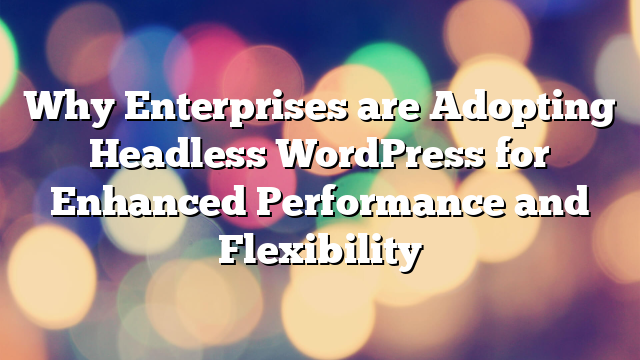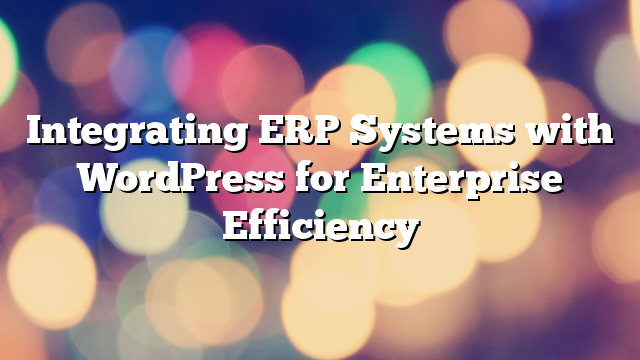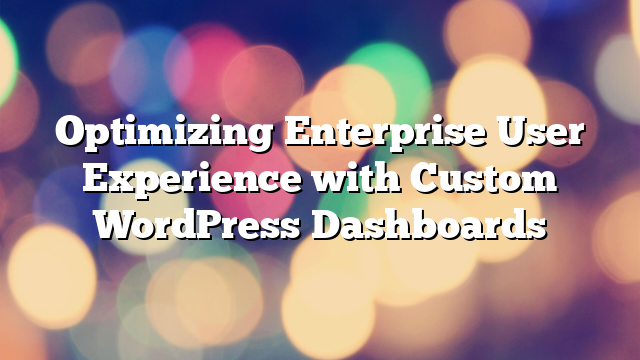Why Enterprises are Adopting Headless WordPress for Enhanced Performance and Flexibility
03.11.2024

As digital demands grow, enterprises are continuously seeking innovative ways to improve the performance, flexibility, and scalability of their websites. Headless WordPress has emerged as a popular solution, enabling businesses to deliver fast, dynamic, and customizable digital experiences. This decoupled approach separates the backend and frontend of WordPress, offering unprecedented freedom in design and functionality. In this article, we’ll explore the key advantages of Headless WordPress for enterprises and why so many large organizations are adopting it for their digital strategies.
Understanding Headless WordPress
Headless WordPress is a version of WordPress where the content management system (CMS) is separated, or “decoupled,” from the frontend presentation layer. In a traditional setup, WordPress serves both as the backend for managing content and as the frontend for displaying that content. However, with Headless WordPress, the backend and frontend communicate through APIs (usually REST or GraphQL), allowing developers to build the frontend using any framework, such as React, Next.js, or Vue.js.
This decoupling offers enterprises greater flexibility, enabling the creation of highly customized user interfaces without being limited by WordPress’s PHP-based templating system. By leveraging Headless WordPress, enterprises can build fast, responsive, and interactive websites that deliver a seamless user experience across various platforms and devices.
Key Benefits of Headless WordPress for Enterprises
1. Improved Performance and Loading Speed
One of the main advantages of a Headless WordPress setup is enhanced website performance. By separating the frontend and backend, pages load faster, and the user experience is significantly improved. JavaScript frameworks like React and Next.js can pre-render content and deliver it quickly to users, which is crucial for enterprise websites that handle high traffic volumes. A faster site not only enhances the user experience but also improves search engine rankings, helping enterprises reach a broader audience.
2. Enhanced Flexibility in Design and Development
With Headless WordPress, enterprises are no longer constrained by traditional WordPress themes or PHP templating. Instead, they can build custom frontends using modern JavaScript frameworks and tailor every aspect of the user experience. This flexibility is invaluable for companies that want to create unique, branded experiences across different devices, including mobile apps, kiosks, and wearable technology. Headless WordPress allows developers to craft completely customized layouts and functionalities without compromising on performance or design freedom.
3. Omnichannel Content Delivery
In today’s digital age, users expect a seamless experience across multiple channels. Headless WordPress enables enterprises to deliver content to various platforms—web, mobile apps, IoT devices, and more—through APIs. This approach ensures that users enjoy a consistent experience regardless of the device they use. For enterprises managing a vast amount of content, this omnichannel capability helps increase reach and engagement by delivering content exactly where their audience is.
4. Scalability for High Traffic Websites
Large enterprises often experience fluctuations in traffic, especially during peak times. With Headless WordPress, websites can be scaled more effectively to accommodate these demands. The backend remains stable and efficient as it’s decoupled from the frontend, and developers can utilize CDN (Content Delivery Network) services to distribute content globally, reducing server load and optimizing content delivery. This scalability is crucial for enterprise-level sites that prioritize uptime and user experience.
5. Enhanced Security
Decoupling the frontend from the backend inherently improves website security. Since the WordPress backend is no longer directly exposed to the public, it becomes harder for attackers to target. Only the API endpoints are accessible, adding an additional layer of security. Furthermore, Headless WordPress allows enterprises to implement stricter authentication measures and limit access to sensitive data. This added security is particularly valuable for enterprises handling sensitive information or operating in regulated industries.
6. Streamlined Development Process
Headless WordPress enables development teams to work independently on the frontend and backend, allowing for a faster and more streamlined development process. This separation reduces dependencies and helps teams use agile methodologies to build, test, and deploy new features more efficiently. For enterprises, this agile approach means faster time-to-market and the ability to respond to evolving customer needs swiftly.
Use Cases of Headless WordPress in the Enterprise
1. E-commerce Platforms
Headless WordPress is particularly advantageous for enterprise-level e-commerce websites. By decoupling the frontend, developers can build customized and interactive product pages that load quickly and provide a smooth checkout experience. Additionally, with APIs, e-commerce sites can integrate seamlessly with external systems like inventory management, CRM, and payment gateways, creating a cohesive shopping experience that meets customer expectations and supports high traffic loads.
2. Content-Rich Websites
Media companies and content-heavy websites benefit immensely from Headless WordPress. The decoupled structure allows for faster content delivery and the flexibility to create unique, multimedia-rich experiences. By distributing content across multiple channels, such as mobile apps, streaming devices, and smart TVs, content-driven enterprises can reach their audience wherever they are, providing a unified experience across platforms.
3. Multinational Corporations with Multiple Websites
For enterprises that operate in various countries or cater to multiple demographics, Headless WordPress provides the flexibility to create custom frontends for each site while centralizing content management. This flexibility allows organizations to maintain brand consistency while adapting the frontend design and language for each market, ensuring a tailored user experience.
Getting Started with Headless WordPress
1. Evaluate Your Requirements
Before transitioning to a Headless WordPress setup, it’s essential to evaluate your business goals, technical requirements, and the resources available. Not every enterprise may need a headless solution, so ensure that the benefits align with your objectives. Assess whether the flexibility, performance, and omnichannel capabilities of Headless WordPress will enhance your current digital strategy.
2. Choose the Right Technology Stack
Selecting the appropriate frontend technology is crucial for a successful Headless WordPress implementation. Popular frameworks include React, Vue.js, and Next.js, each offering unique benefits for performance and interactivity. Ensure that your development team is familiar with the chosen stack to maximize the potential of the headless setup.
3. Plan for API Management
Headless WordPress relies heavily on APIs, so it’s essential to have a robust API management strategy in place. REST API and GraphQL are commonly used in headless setups, allowing the backend to communicate with the frontend efficiently. Secure your APIs, set rate limits to prevent overload, and implement caching to optimize API response times and reduce server load.
4. Focus on Security
While Headless WordPress offers improved security, it’s important to implement best practices such as encryption, strong API authentication, and strict access controls. Limiting API access to only necessary endpoints, utilizing firewalls, and conducting regular security audits are critical steps in ensuring that your headless setup remains secure from potential vulnerabilities.
Conclusion
Headless WordPress offers enterprises a powerful and flexible solution for delivering high-performance digital experiences. With benefits such as faster loading speeds, improved security, and the ability to support omnichannel delivery, it’s no wonder many large organizations are turning to Headless WordPress. By leveraging modern frontend frameworks and robust API management, enterprises can unlock the full potential of WordPress, creating engaging, scalable, and secure websites that cater to diverse user needs.
If your enterprise is ready to harness the power of Headless WordPress, contact AllWebDev for expert guidance and implementation support to transform your digital strategy.



